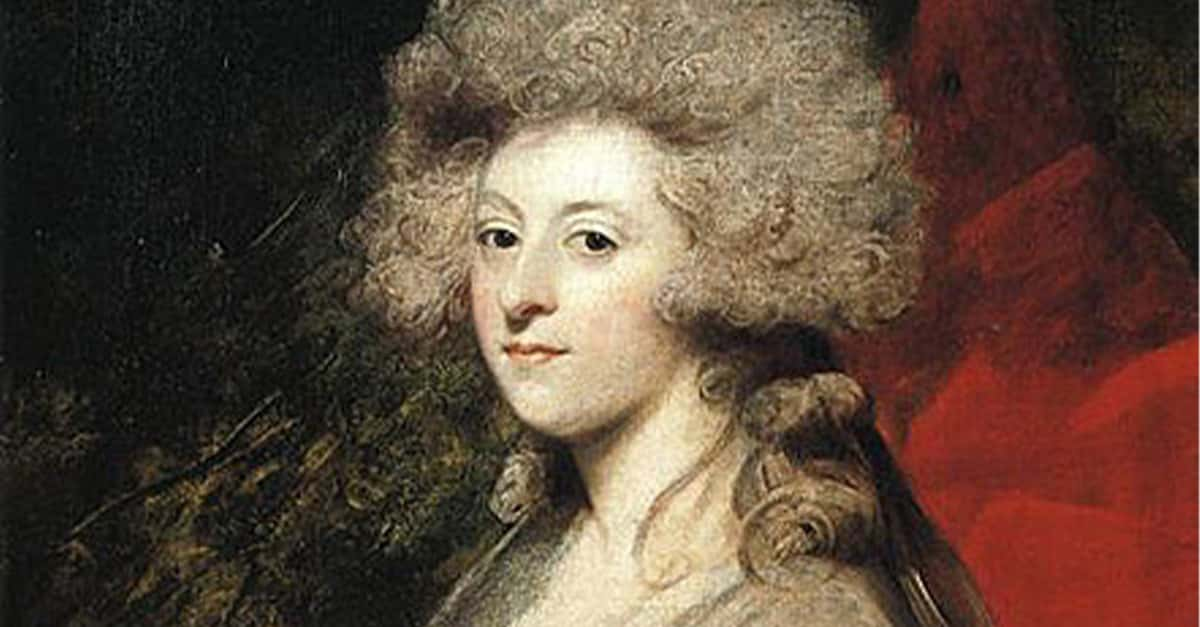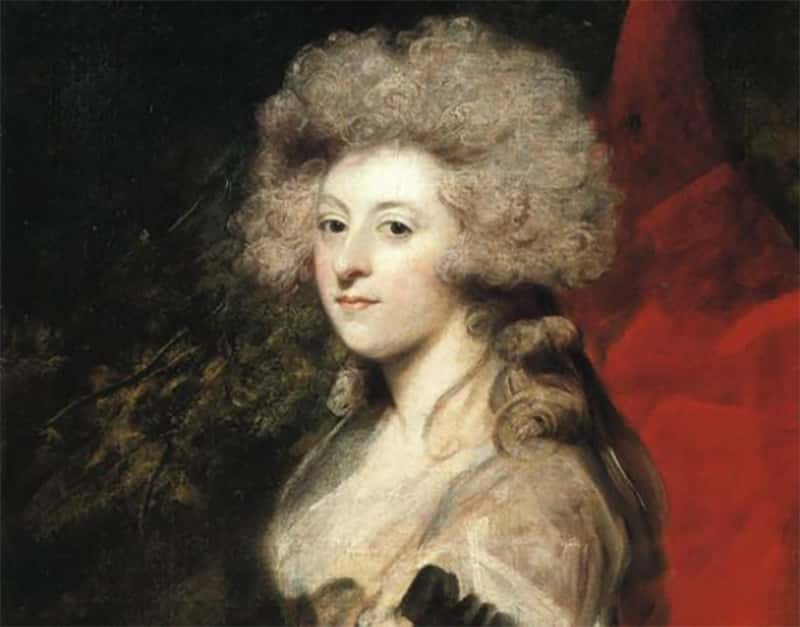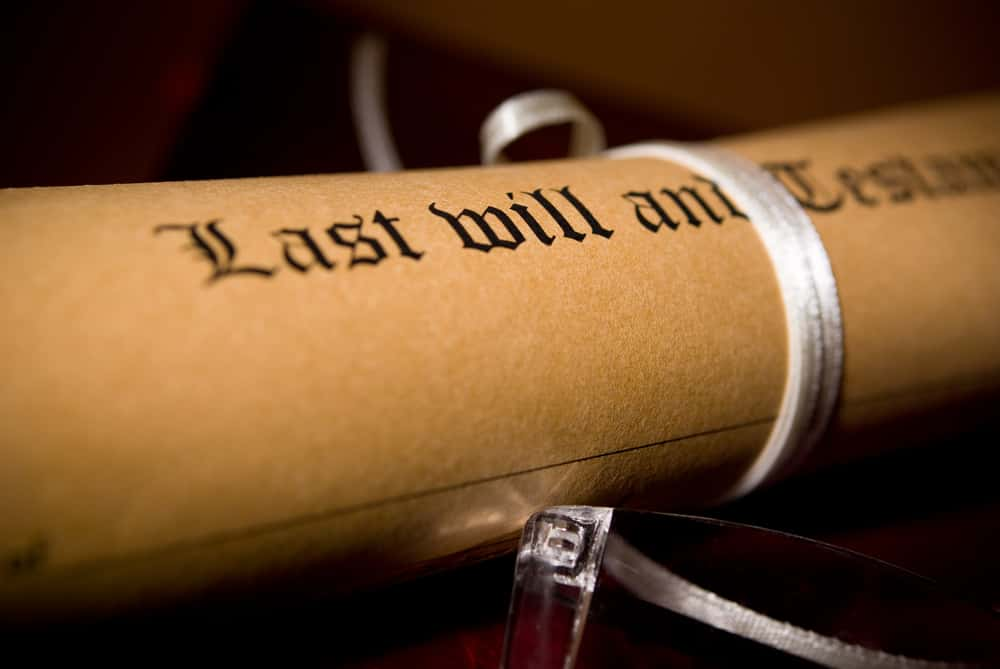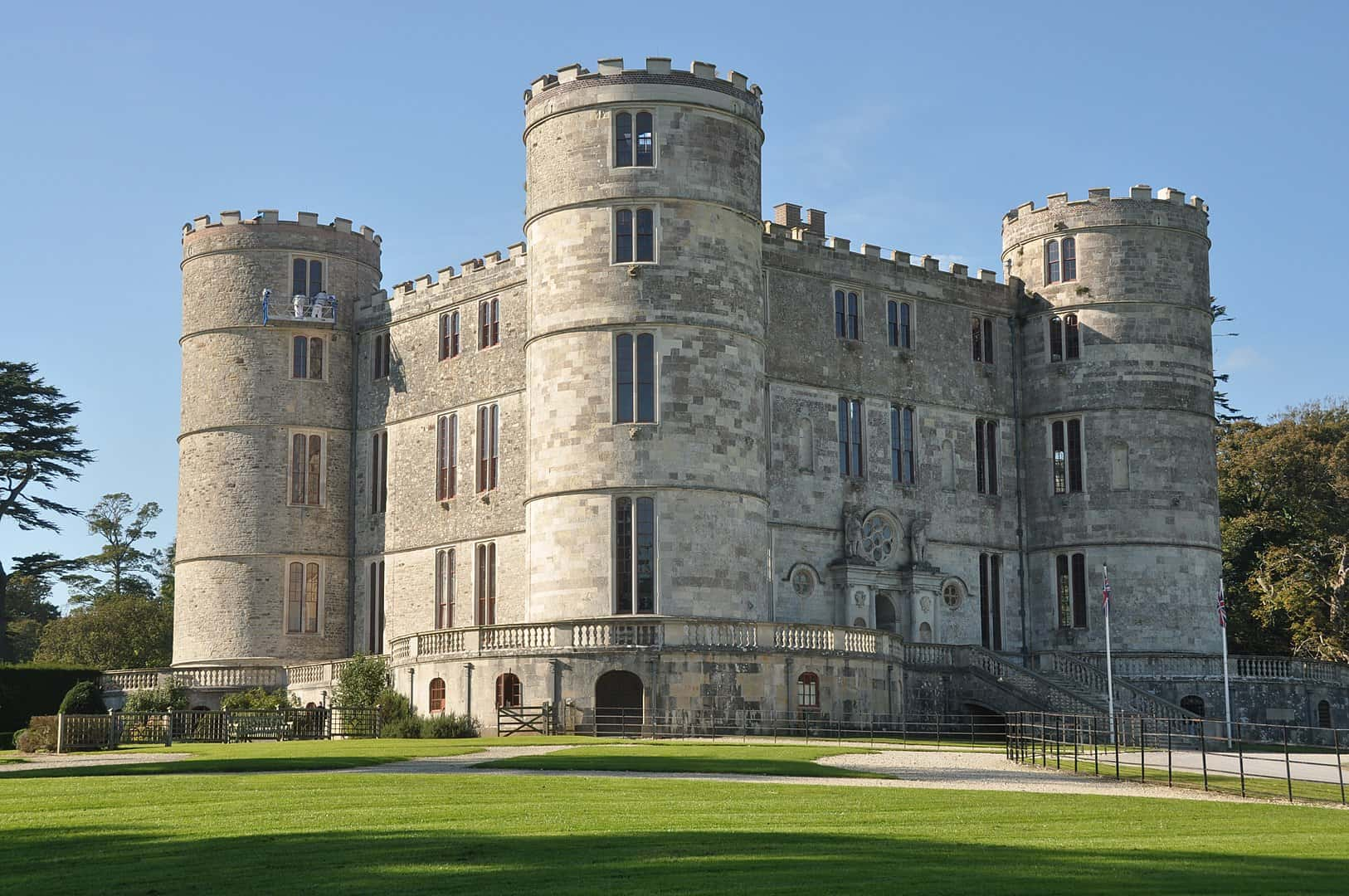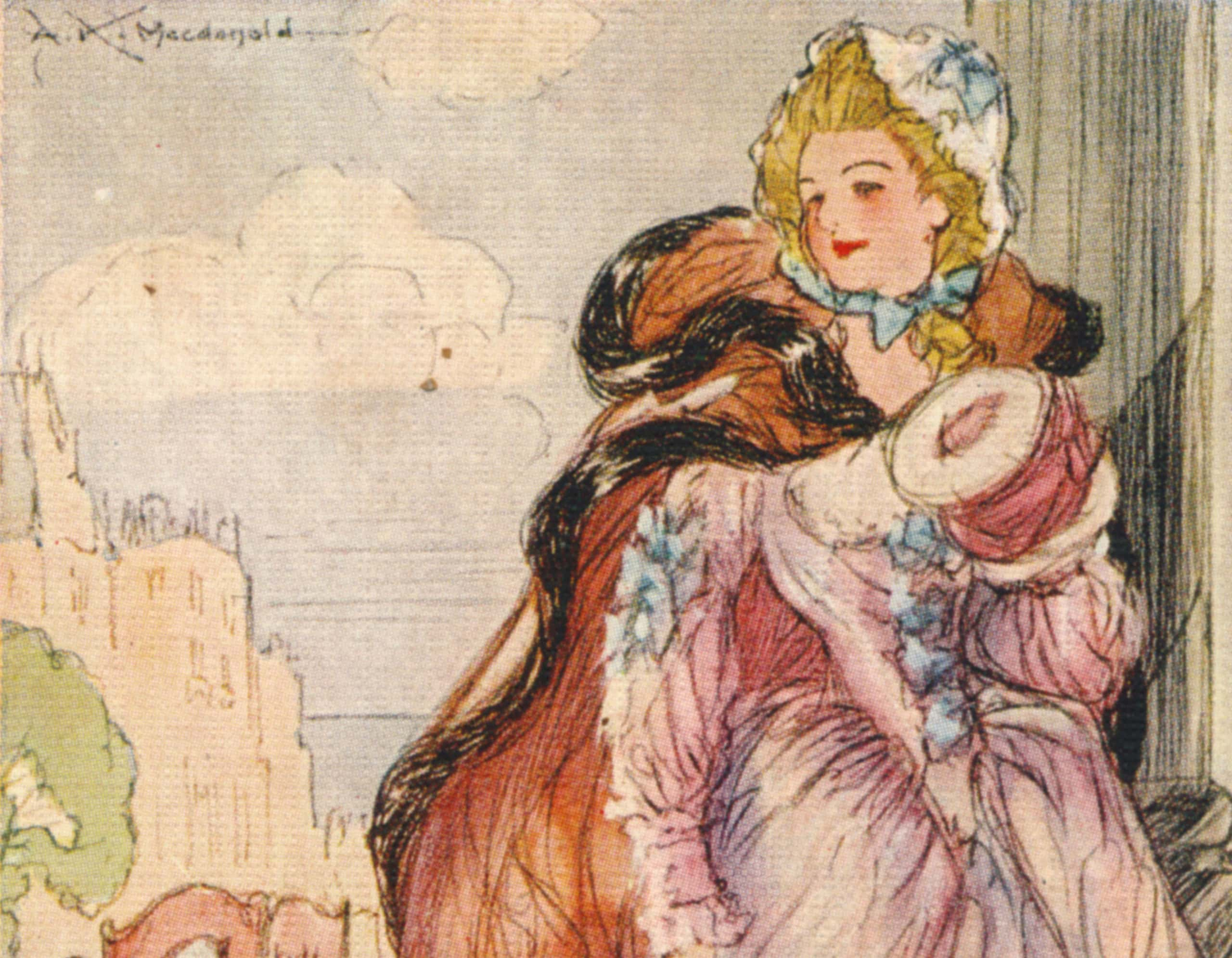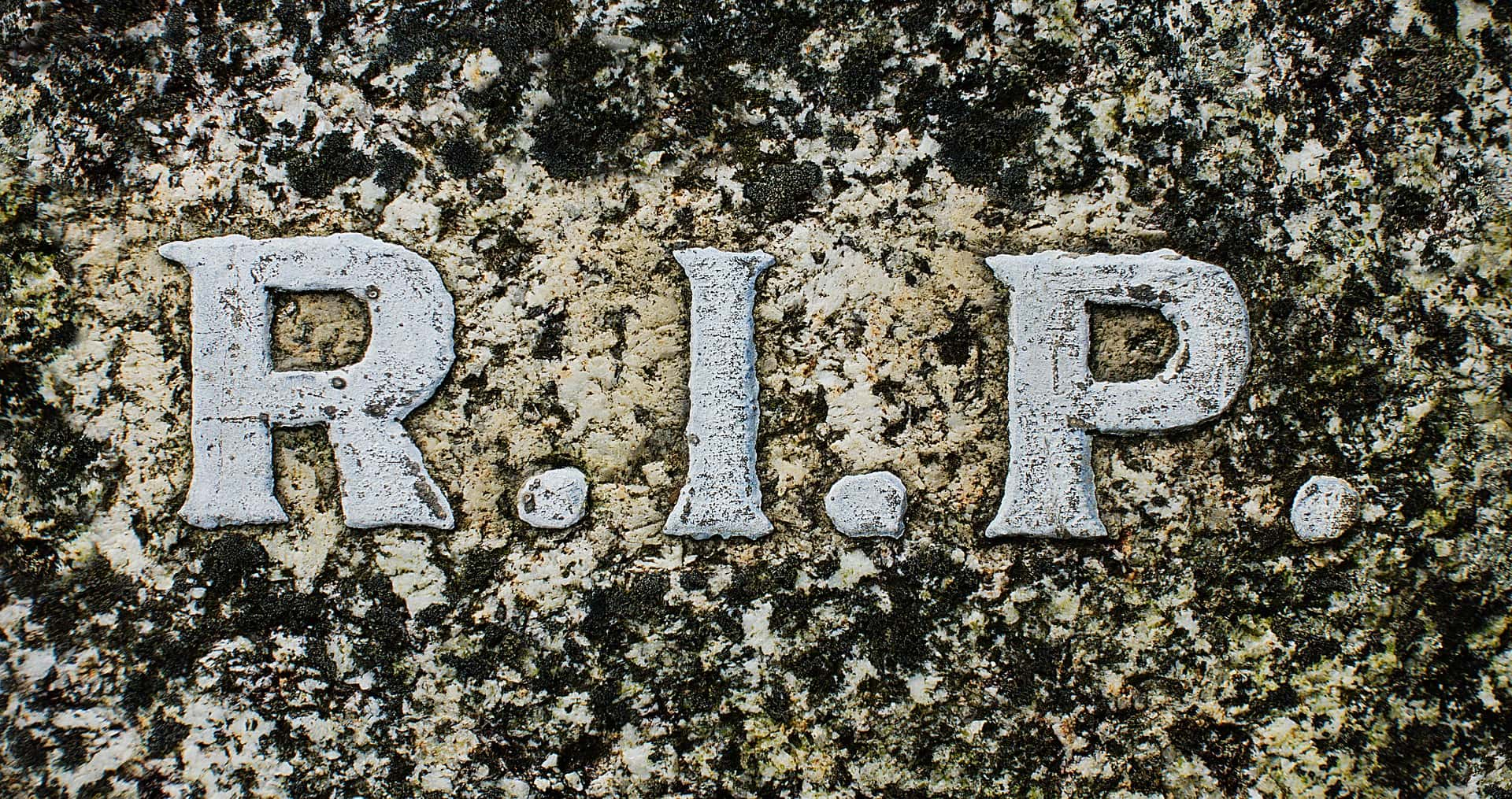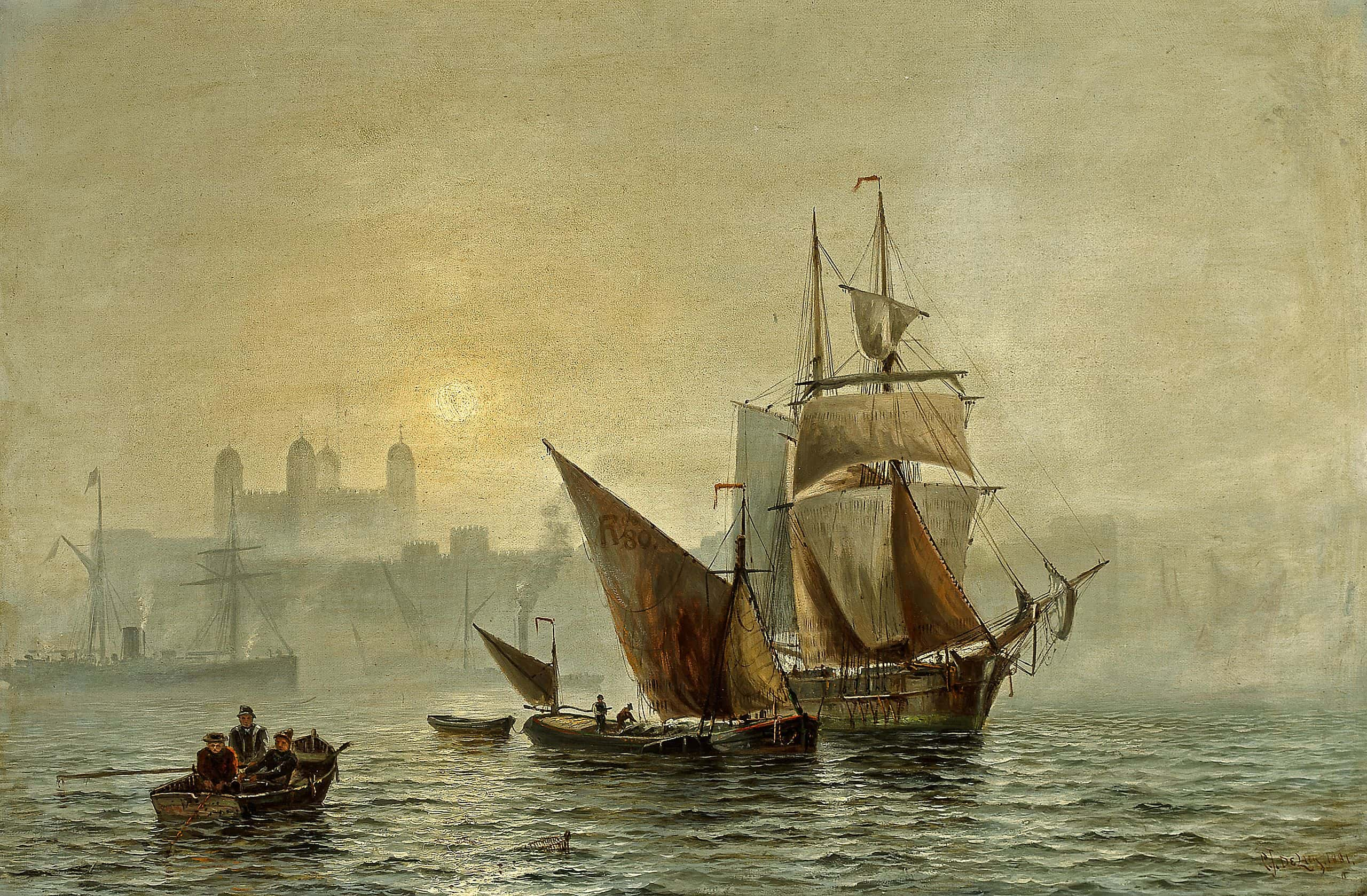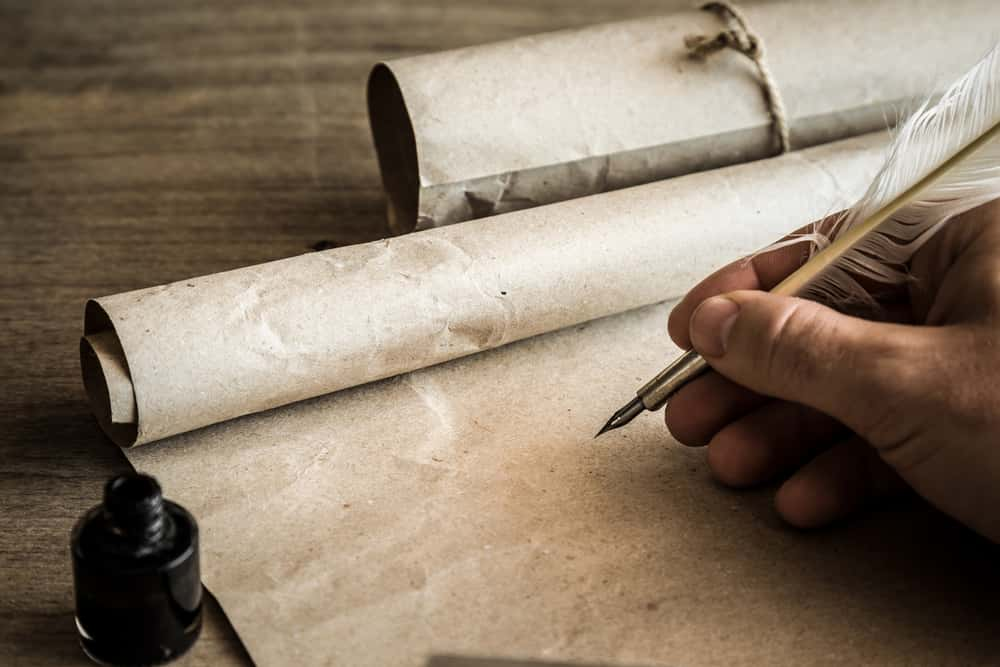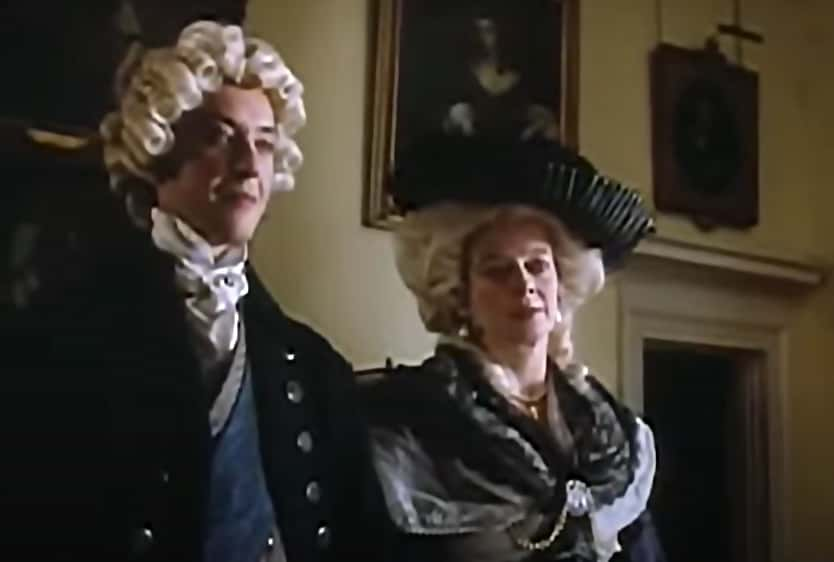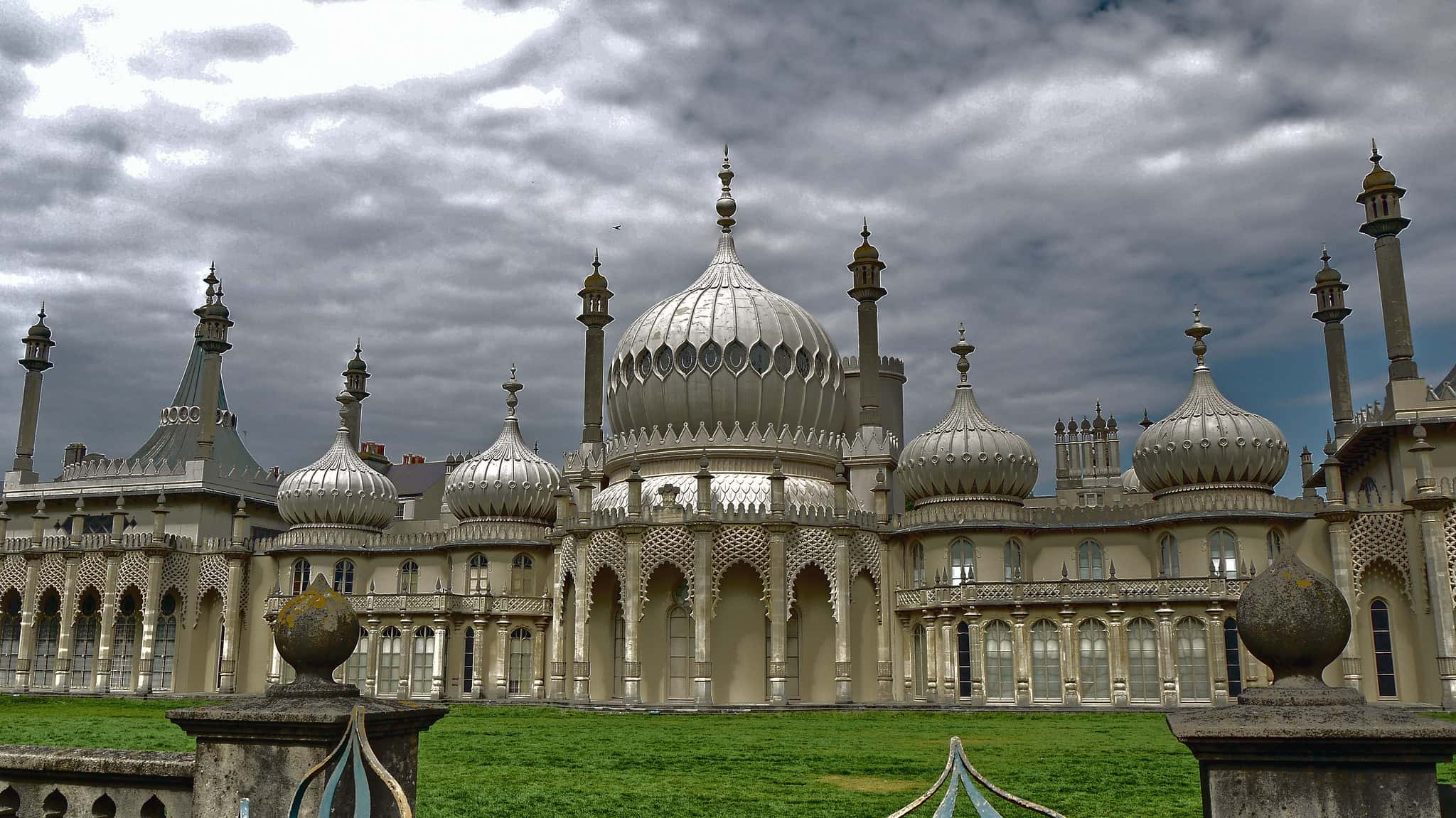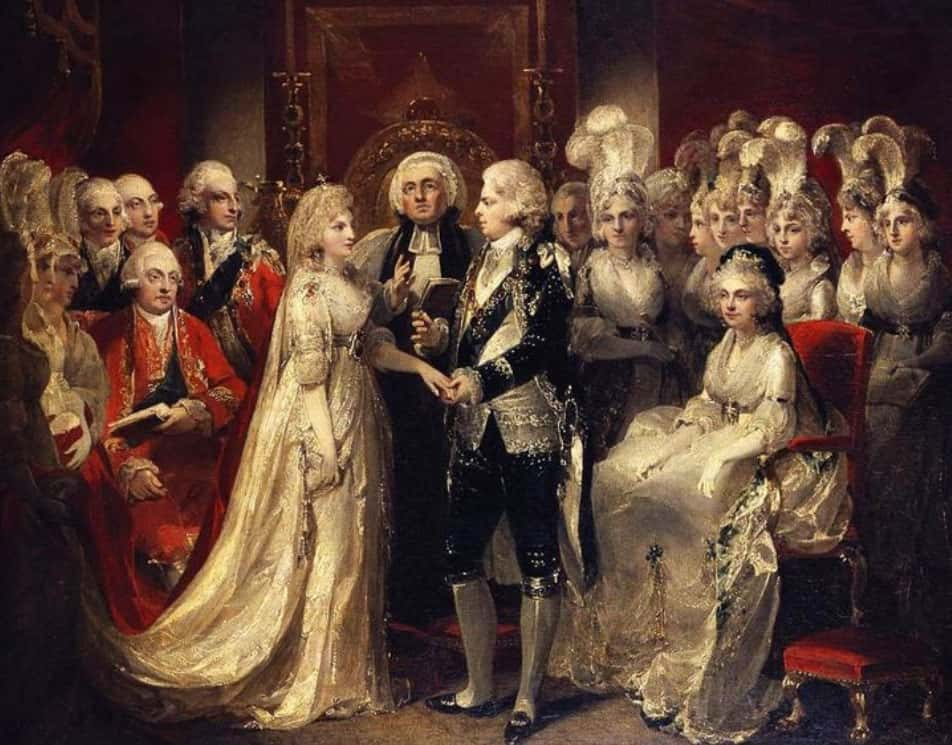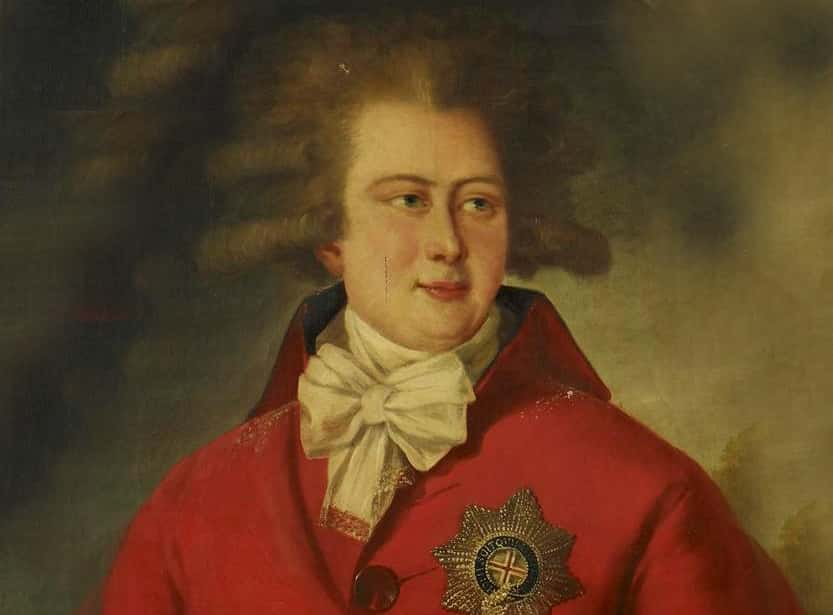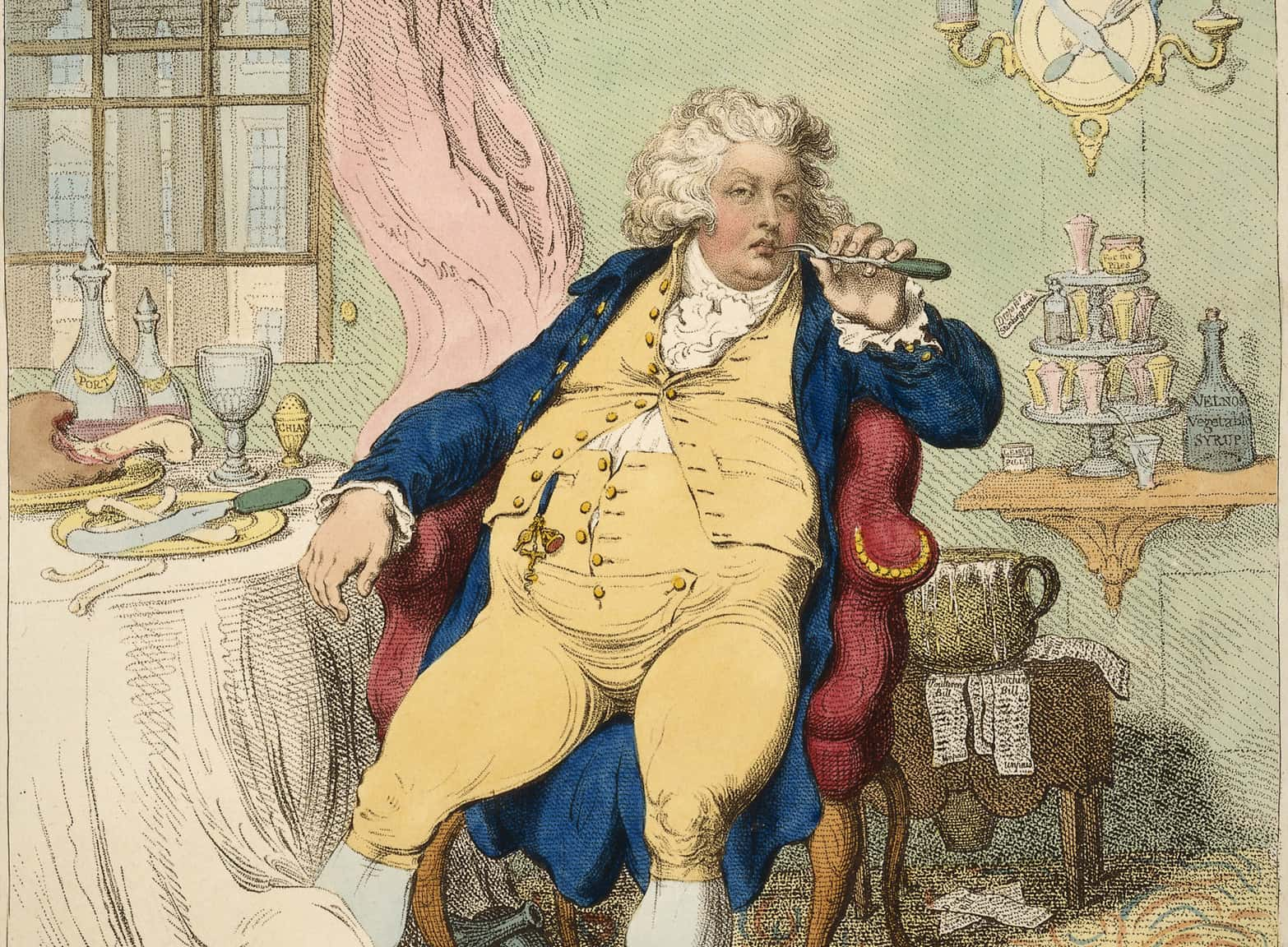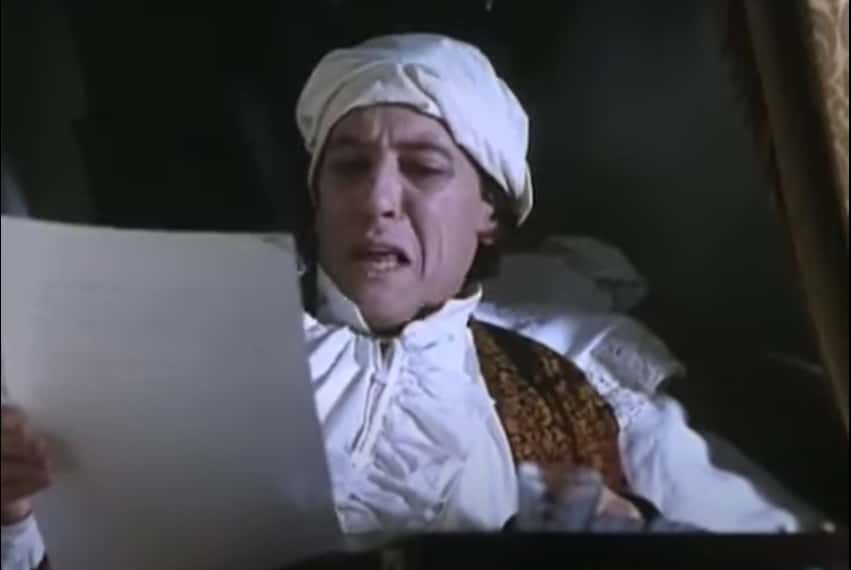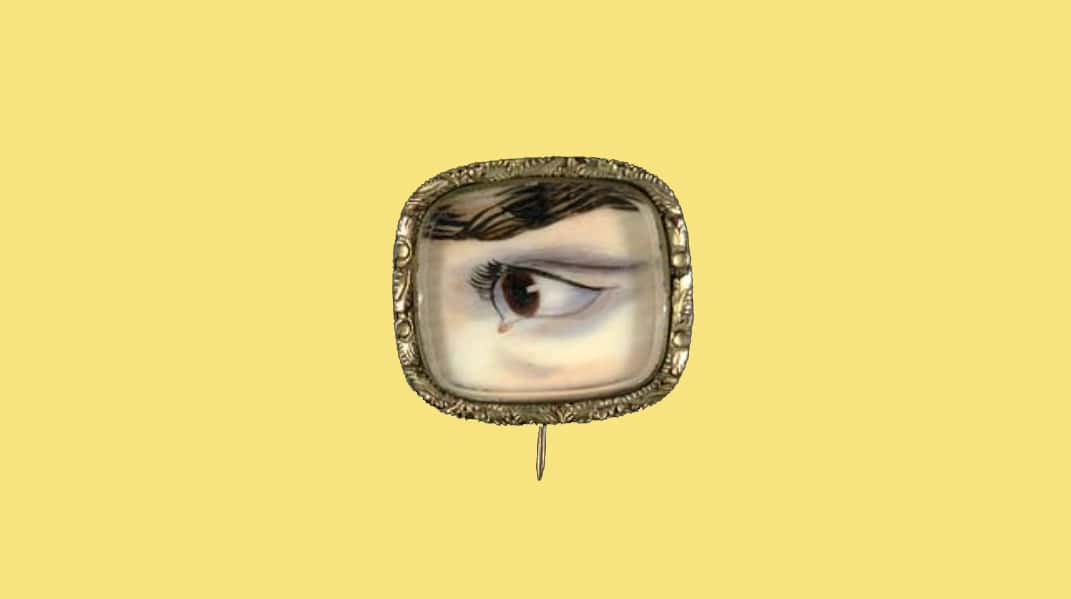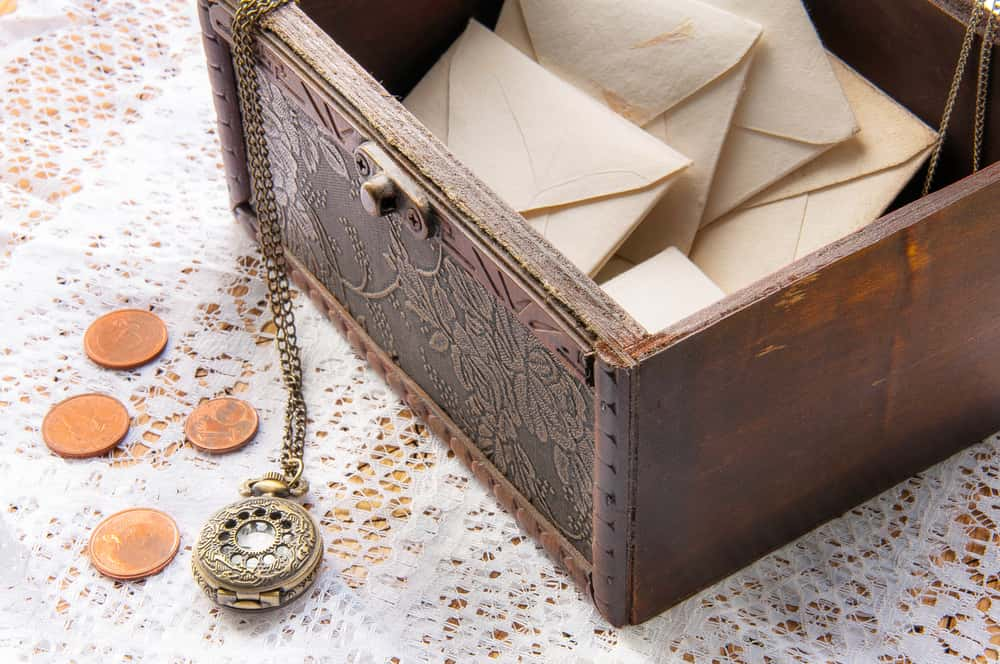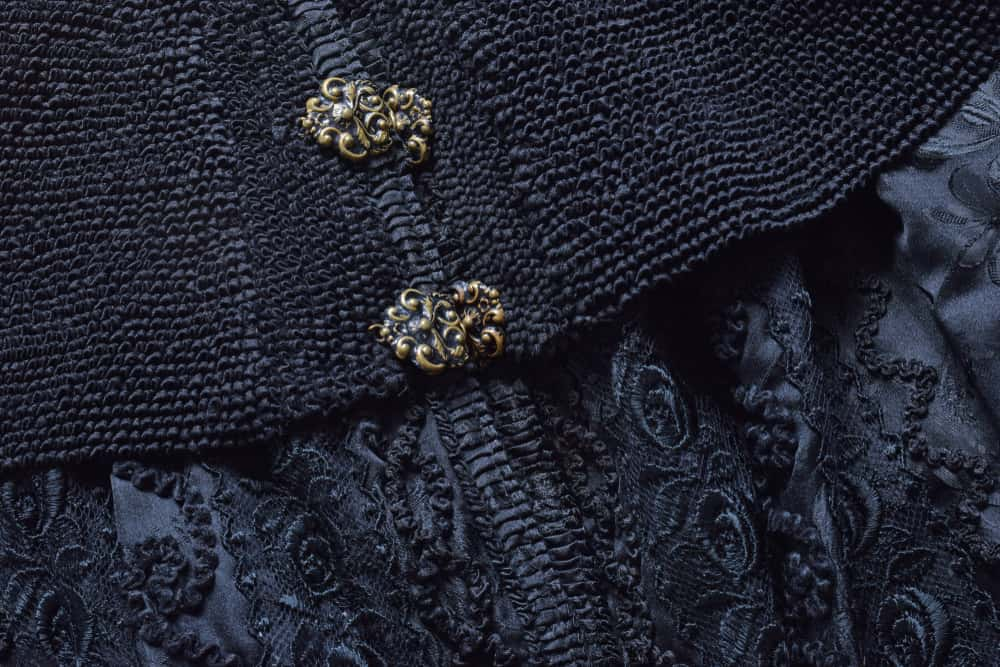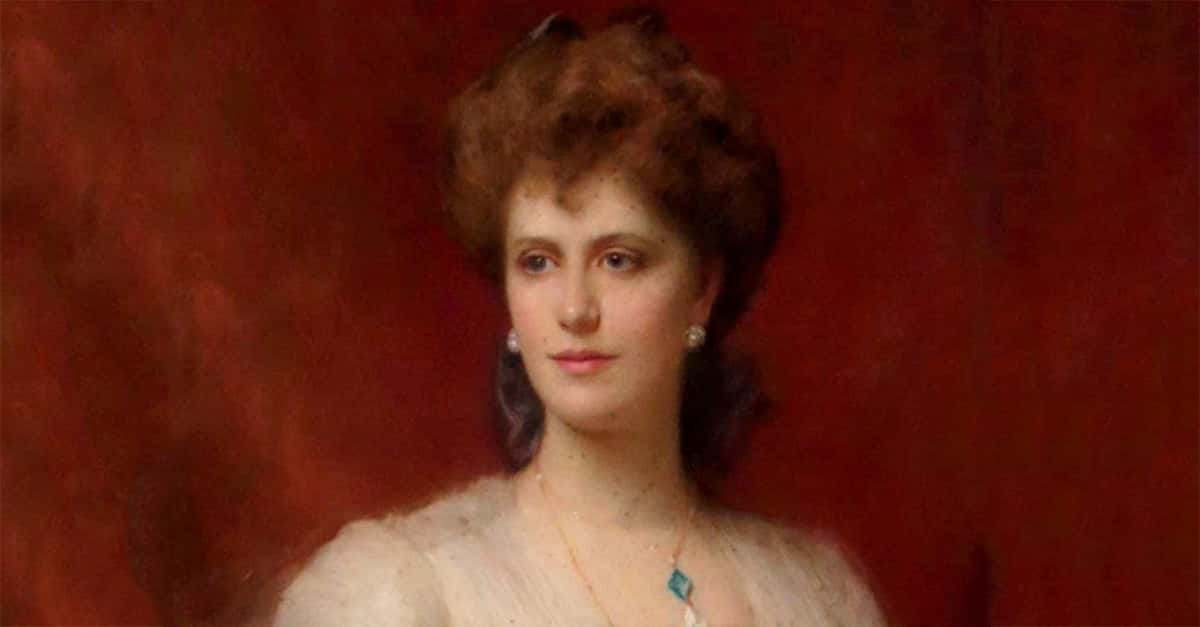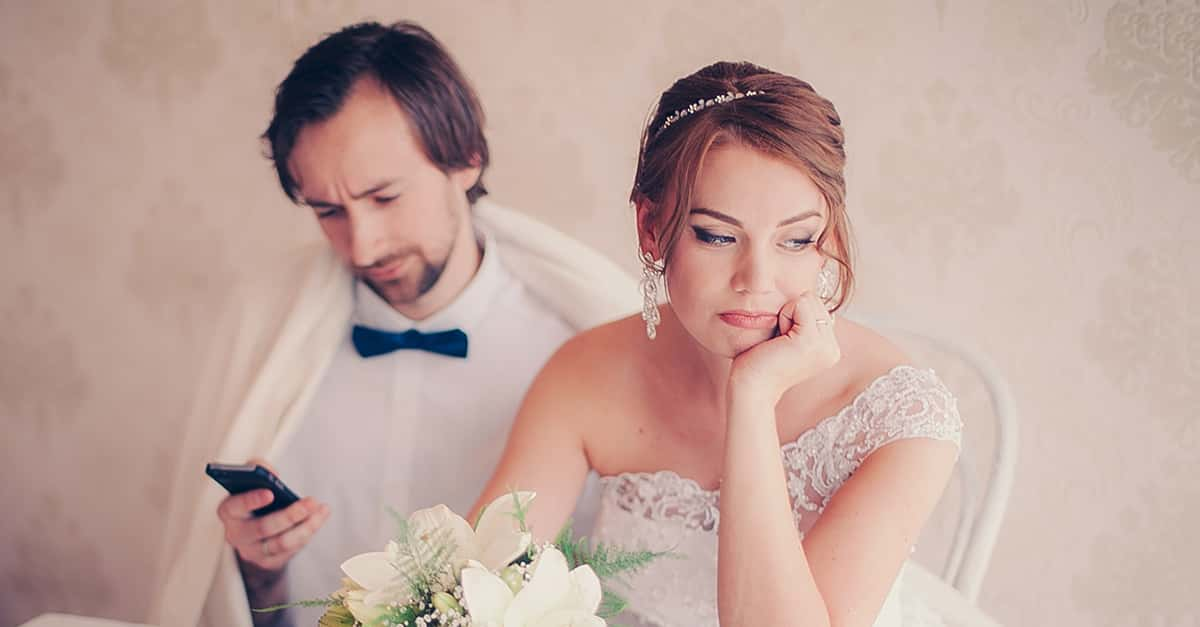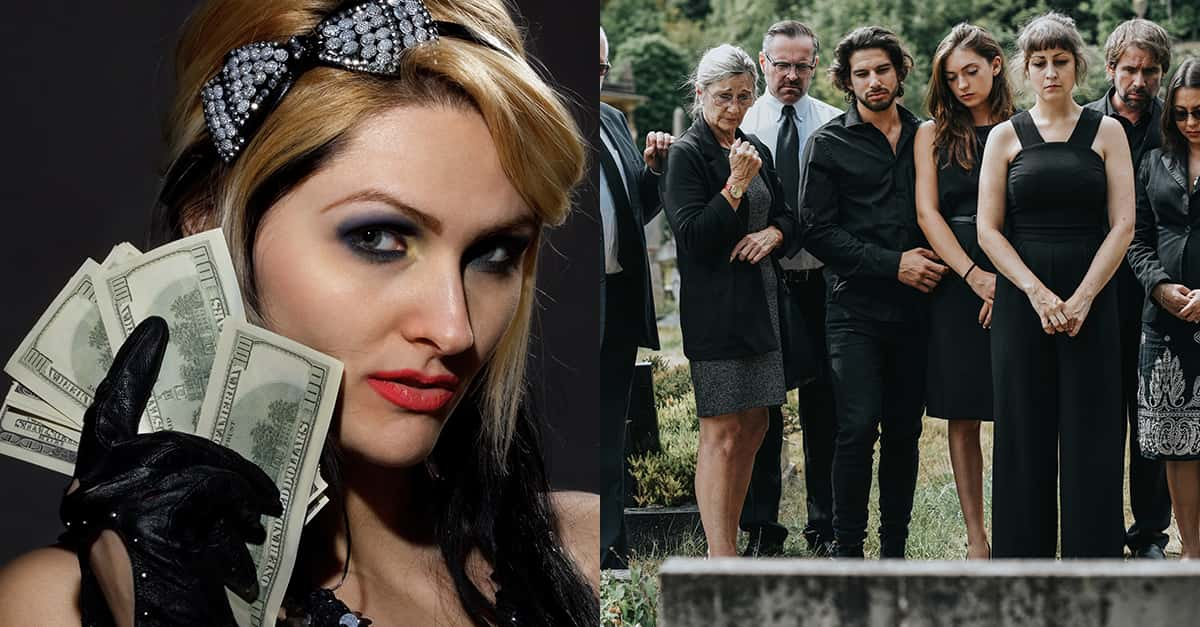The story of Maria Fitzherbert and her Prince of Wales is wrought with devastating betrayal and heated passion. Constantly torn between her own independence and her longing for romance, Maria starred in her very own royal drama. She pushed the boundaries, kept her secrets close, and never took "no" for an answer.
1. She Had Mysterious Origins
Maria was born in Shropshire England in 1756 and carried the birth name Maria Anne Smythe. Even then, she was the subject of sordid gossip. Whispers speculated whether Walter Smythe was really her father. She was, after all, born at the Duke of Kingston's castle, and some believed that Maria truly belonged to him. But this was only a taste of the scandal to come.
2. She Married For Money
When Maria was just a teenager, she married her first husband, Edward Weld. Weld was twice her age and a rich landowner to boot. From an economical standpoint, Maria chose wisely, but when it came to matters of the heart, the marriage seemed rather loveless. Nevertheless, at the tender age of 16, Maria seemed set for life. But then, out of nowhere, tragedy struck.
3. She Wasn't Worried
Only three months after Maria wed Edward, her husband had a devastating accident: he fell from his horse and died from his injuries. Edward's passing left Maria widowed, alone, and most importantly, free. Bolstered by the idea of inheriting Edward's fortune, she wasn't too worried about her prospects. She was the sole heir to her husband's estate...Or so she thought...
4. She Lost Everything
After Edward passed on, Maria anxiously awaited the reading of his will. When the time came, her eyes shone in anticipation. But as the reading went on, her smile faltered...She wasn't even mentioned once. Because his demise came shortly after their marriage, her husband hadn’t revised his will to include her. She could only hope that her wifely status still held sway.
5. She Held Out Hope
To Maria's dismay, all her husband's money automatically went to Weld’s younger brother, Thomas. But surely Thomas would see that she was due something for being his brother's wife—even if it was for just a couple of months. Although he held Maria's livelihood in his hands, Thomas had his own personal agenda and a very real reason for keeping the inheritance for himself.
6. She Was Left High And Dry
Even though Maria looked piteous as a young widow begging for scraps, Thomas wasn't about to share his brother's fortune. After all, he had 15 children to take care of. Maria, on the other hand, was childless and had only been a part of the family for a short time. Needless to say, she didn't get a cent, and as a result, became completely destitute.
She had no choice but to count her losses and look for new means of security.
7. She Acted Fast
Three years later, Maria earned her surname when she married Thomas Fitzherbert in 1778. It’s not clear how much love there was between the two of them as theirs was more a marriage of necessity than anything else. They were, however, blessed with a little boy. Finally settled with her growing family, things seemed to be looking up.
But despite this rare moment of peace, Maria was a magnet for calamity, and soon enough, she endured yet another heartbreak.
8. She Faced An Unimaginable Grief
Maria Fitzherbert faced the sudden passing of not one, but two, family members. Tragically, her son became terminally ill and passed at an early age. But that wasn't all. In 1781, her husband was wounded in an anti-Catholic riot. The wound was serious, and although doctors tried to save him, he succumbed to his injuries.
Widowed once again, Maria kept an eye on her prospects. This time, there was a silver lining.
9. She Waited On A Will
Fitzherbert’s anxiety must’ve been through the roof. She’d already missed out on financial support from her first marriage. Surely, it couldn't happen again. To her relief, Fitzherbert's will included her, and Maria inherited 1,000 pounds per year (about 220,000 US dollars today), as well as a townhouse in fashionable Mayfair. For Maria, her life was just beginning.

History's most fascinating stories and darkest secrets, delivered to your inbox daily.
10. She Sowed Some Wild Oats
Fitzherbert was now 28 years old and twice widowed. She’d been shackled to one man or another for the past 12 years and had overcome some serious lows. It was high time she indulged in some fun. Upon entering London's high society, she came to a stunning revelation. After being cooped up for so long she hadn't realized the power of her own womanly wiles: Maria was a total catch.
11. She Was In Demand
To gaze upon Maria Fitzherbert was to see her beauty, her refinement, and her elegance. Her accomplishments were described as "solid and fascinating," and in addition to her good looks, she boasted a stimulating intelligence. As such, many young men trailed the hem of her dress, hoping for her attentions. But despite a wealth of suitors, there was one man that stood out above the rest.
12. She Aroused A Royal
One of Maria’s admirers was none other than royal bad boy, George IV, the Prince of Wales. At the time, he was just over 20 years old and Fitzherbert was six years his senior. After he set his eyes on her, nothing could still his pursuit. She was everything he wanted. But Maria wasn't easily won, and although George was in line for throne, his temperament was far from charming.
13. She Wasn't Impressed
The Prince of Wales just didn't seem like the optimal lover. He had a reputation for heavy drinking and gambling, and was often criticized for his lack of chivalry. But that wasn't all. He was also known for his fashion sense, his overspending, and of course, his womanizing. But after meeting Maria, he hoped to stem his debaucherous habits and win her heart.
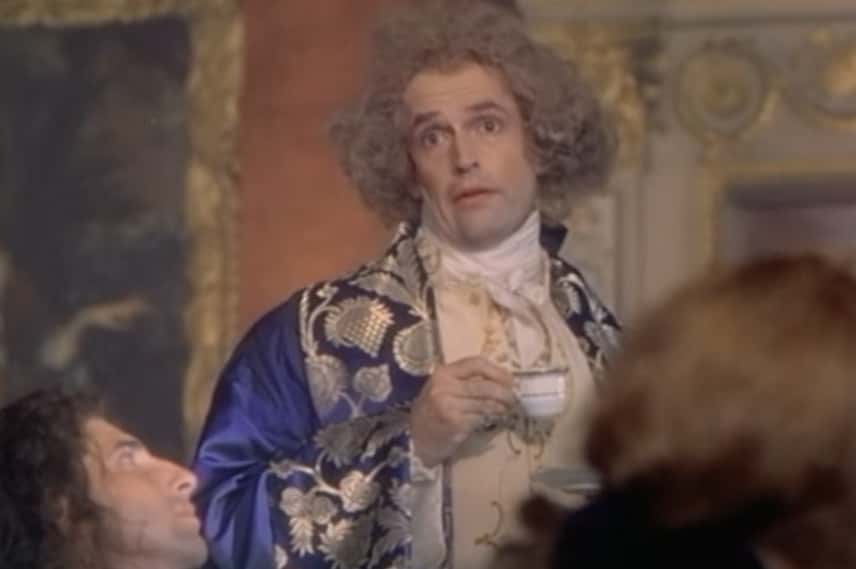 The Madness of King George (1994), The Samuel Goldwyn Company
The Madness of King George (1994), The Samuel Goldwyn Company
14. She Couldn't Care Less
The Prince was clearly crazy for Maria Fitzherbert. She, on the other hand, didn't seem to reciprocate his deep feelings, and was—if anything—only mildly impressed. George chased her endlessly but kept finding himself up against a wall. She just wasn’t that into the Prince of Wales. And that's when it got dark, and I mean, really dark: Maria's indifference pushed George over the edge.
15. She Was Blackmailed
George was desperate to be with Maria, and on one horrible night, he pushed a knife straight into his chest. The wounded Prince lay in his bed bleeding profusely, and sent a message to Fitzherbert, threatening to stab himself again unless she came to his side. She had no choice but to play her part in this twisted game.
16. She Had A Dramatic Proposal
Maria Fitzherbert rushed to George’s bedside and found him cut, bleeding, and in full dramatics. He proposed marriage on the spot and even gave her a ring and a document to prove it. But Maria wasn't easily fooled by this childish and embarrassing display. Even though she yielded to his whims, she knew that the union was impossible.
 Mrs. Fitzherbert (1947), British National Films
Mrs. Fitzherbert (1947), British National Films
17. She Wasn't Suitable
George IV was the Prince of Wales and heir to the throne. If he ever decided to marry anyone, he had to ask permission from the King. That, right there, was the source of their problem. The Bill of Rights stated that members of the royal family couldn’t marry a Catholic or a commoner—and Maria Fitzherbert was both.
Realizing the idiocy of the situation, she knew she had to put a stop to this foolhardy engagement.
18. She Ran Away
After George’s episode with the knife, Maria understood the extremes of his temperament. So, to break off her engagement, she sent the ring back through a messenger. She didn’t want to be anywhere near the guy. To avoid any more hysterics or self harm, she high-tailed it to the Continent. But George wasn't about to admit defeat.
19. She Couldn't Escape Him
While Maria was busy enjoying her time in Europe, George was going absolutely crazy. It wasn't long before his creepy side came out: he sent out a group of detectives to follow her every move. But knowing what she was doing wasn’t enough. Grasping at straws, he tried his hand at romance, and sent her a 42-page love letter in the hopes of winning her back.
20. She Yielded To Him
What was Fitzherbert to do about Prince George? He’d nearly committed suicide, he’d followed her across Europe, he’d written her love letters, and most importantly, he was willing to give up being the King of England. Won over by his unfailing persistence, Maria folded and headed back to England to marry her unhinged Prince.
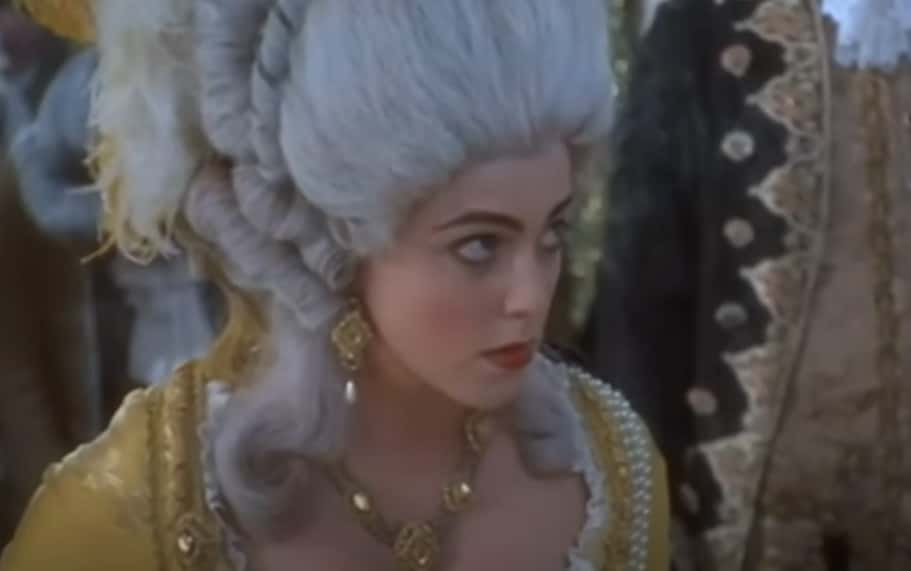 The Madness of King George (1994), The Samuel Goldwyn Company
The Madness of King George (1994), The Samuel Goldwyn Company
21. She Kept It A Secret
Maria and George's wedding was far from a fairytale. Instead, they planned a small ceremony in Fitzherbert’s living room. But there was still one thing missing. They needed someone to officiate the illicit union—someone secretive, religious, and morally bereft. George thought of the perfect person. The only problem was that they had to get him out of prison first.
22. She Made It Official
The only chaplain willing to turn a blind eye to their unlawful union was idling in Fleet Prison. His name was Reverend Robert Burt and he had debts totalling 500 pounds. Willing to go to any length, the Prince put up the money and secured Burt's release. Finally, in 1785, Marie Fitzherbert and Prince George became man and wife. But there was a catch.
 The Madness of King George (1994), The Samuel Goldwyn Company
The Madness of King George (1994), The Samuel Goldwyn Company
23. She Lived Like A Princess
Because their marriage was technically invalid, the couple couldn't live in the royal residence. Their marriage had to remain a secret. However, they still needed a place to live, and with Fitzherbert already residing in Brighton, George had the perfect solution. He built a castle next door. With this new power couple on the loose, the simple fishing village of Brighton was in for a surprise.
24. She Caused A Scene In A Sleepy Village
Maria and George's presence in sleepy Brighton attracted the aristocracy from London and soon there were hotels and villas cropping up. In particular, the couple's castle became a hot topic of conversation—mostly for being an eyesore with its tasteless and showy exterior. Nevertheless, the village quickly grew in popularity and even earned the nickname “London by the Sea.”
But the citizens of Brighton also had a nickname for Maria—and it was far from complimentary.
 The Madness of King George (1994), The Samuel Goldwyn Company
The Madness of King George (1994), The Samuel Goldwyn Company
25. She Kept Her Cool
Even though Maria and George’s marriage flew beneath the radar, it wasn't long before the visiting aristocracy caught wind of it. Soon enough, they became a running joke. People called Maria “Mrs. Prince,” which teased at the fact that she could never be a real Princess. This petty meanness didn't phase her. Besides, this was the least of Maria's problems.
26. She Had In-Law Problems
Turns out, Maria and George were terrible secret keepers. Somehow, even the King and Queen found them out—and they were not happy. For them, it was simple: because Maria was a Catholic with no royal blood, the marriage was invalid. But with their eyes peeled for further deviancy, the King and Queen sniffed out yet another issue—George's outrageous debt.
As dutiful parents, they offered to curb his financial troubles—but only under one condition....
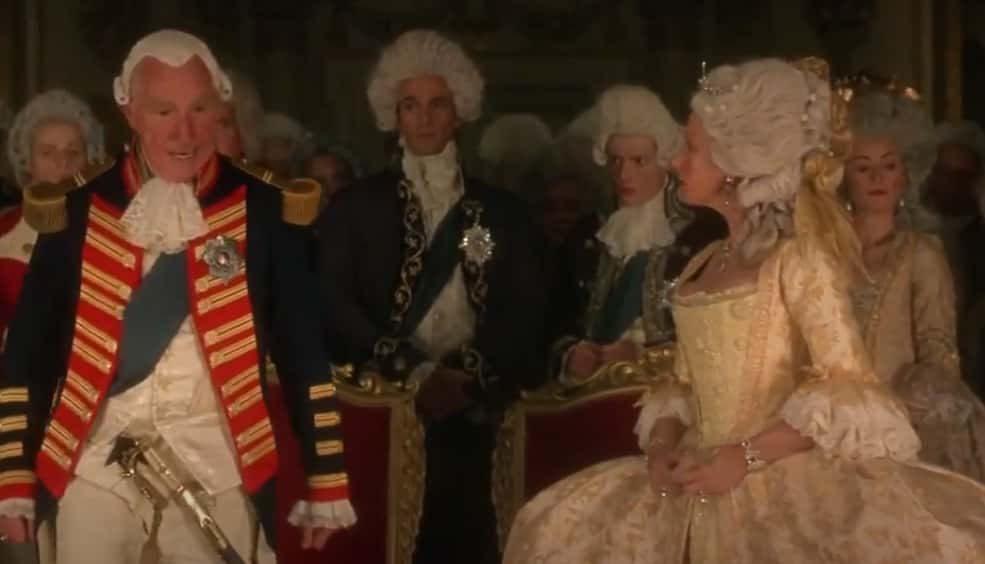 The Madness of King George (1994), The Samuel Goldwyn Company
The Madness of King George (1994), The Samuel Goldwyn Company
27. She Was On The Losing Side
In 1787, the King and the government stepped in to help with George’s debt. But there was a devastating catch. In order to receive financial assistance, Prince George had to renounce his marriage to Maria. Caught between a rock and a hard place, George played a losing game: he could keep his wife and go broke, or lose his wife and free himself from debt. Sadly, it didn't take him long to come to a decision.
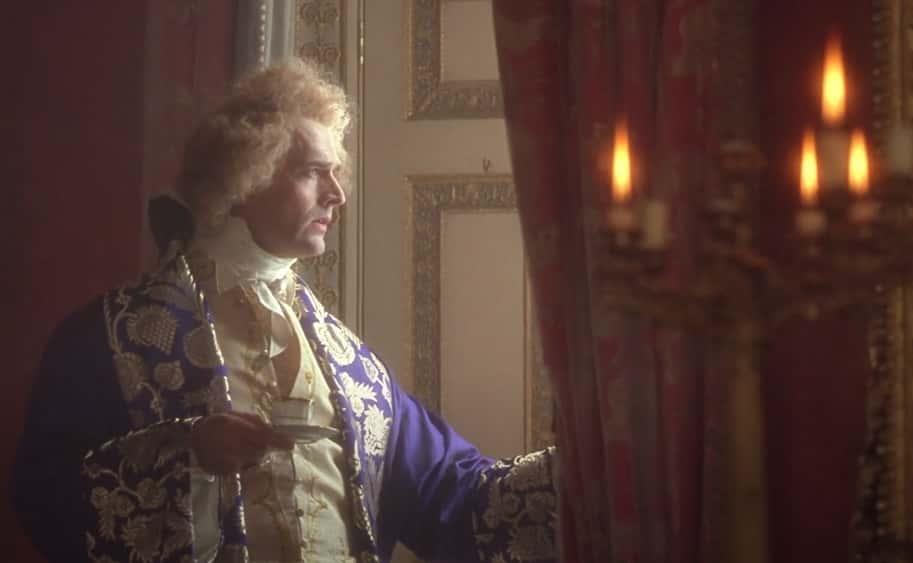 The Madness of King George (1994), The Samuel Goldwyn Company
The Madness of King George (1994), The Samuel Goldwyn Company
28. She Lost Her Third Husband
In a heartbreaking and public statement, Prince George called the rumor of his marriage to Maria Fitzherbert a “malicious falsehood.” Maria was inconsolable. After all the lengths he had gone to to win her over, he denied her love without a second thought. Maria had a difficult choice to make. Incensed by his behavior, she seriously contemplated ending it forever.
 The Madness of King George (1994), The Samuel Goldwyn Company
The Madness of King George (1994), The Samuel Goldwyn Company
29. She Witnessed His Philandering
Despite her deep reservations, Maria Fitzherbert eventually, and begrudgingly, forgave George. But their reconciliation was embarassingly short-lived. George had a wandering eye and it wasn't long before he returned to his womanizing ways. When the Countess of Jersey, Frances Villiers, struck his fancy, he broke up with Maria in the most hurtful way imaginable.
30. She Was Blindsided
On June 23, 1794, Maria received a letter informing her that her relationship with the Prince was over. This time, she wasn’t heartbroken—she was angry. The love of her life had denied their marriage, taken up with another woman, and to top it all off, divorced her by mail. In the face of this betrayal, their relationship seemed beyond repair.
31. She Fell To The Wayside
Now that Maria Fitzherbert was out of the picture, the King, the parliament, and the public demanded that George have a proper marriage. Only then, would the government use taxpayer's dollars to pay off George’s huge debt. But the bridal candidate was an interesting choice: Caroline, the Duchess of Brunswick, was none other than his first cousin.
The couple wed in 1795, but what the Prince did next made it clear that he still held a flame for Maria.
32. She Wasn't Forgotten
Even after his fickle, philandering behaviour, Prince George couldn't forget his first wife. Although married to Caroline, his will communicated his true feelings: he bequeathed all his "worldly property...to my Maria Fitzherbert, my wife, the wife of my heart and soul." The man was undeniably smooth. But would this romantic gesture be enough to soothe Maria's hurt pride?
33. She Couldn't Resist Him
Nothing much happened after the Prince wrote the will, and Fitzherbert seemed to tire of George’s empty proclamations of love. But as usual, George was ready to wear her down. He was through with his wife and his lover, and he wanted Fitzherbert back. He began showering her with gifts and reminded her of his generous will. Beneath her prickly guard, Maria slowly began to soften.
34. She Gave Him A Second Chance
It was a new century, but she still had the same old boyfriend. In June, 1800, Fitzherbert welcomed George back into her life. Still wary of his terrible track record, she was ready to give him another shot. Hopefully, this would mark the end of their series of dramatic breakups. They were getting too old to be playing these “on-again, off-again” games...Weren't they?
35. She Took A Leaf Out Of His Book
A few years after they reconciled, George fell for yet another woman. He simply didn't learn from his mistakes. Lady Hertford was younger, curvier, and most importantly, newer. Fitzherbert had had it. It was the final humiliation. And to give him a taste of his own medicine, she broke up with him by letter. The relationship was finally over, but that’s when the games truly began.
36. She Had A Plan
Maria Fitzherbert was clearly biding her time. Her ex-husband was on the brink of becoming the King of England and, in the meantime, she kept a secret weapon in her back pocket. When George’s father went mad and then passed on, it was time for him to meet his destiny. In 1820, George ascended the throne. Not long after gaining power, he took another stab at Maria and betrayed her even further.
37. She Had Her Name Slandered
Yes, George became King but he also became a colossal jerk. He trashed Fitzherbert's name openly and whenever he referred to her, he did so with “feelings of disgust and horror." To make matters worse, he told everyone that it "was an artificial marriage...just to satisfy her; that it was no marriage.” He even said that there was no written document to prove the authenticity of their marriage.
Um, excuse me? Maria Fitzherbert, like a good shopper, had wisely kept her receipt.
38. She Went Straight To The Top
When Fitzherbert caught wind of George's blatant lies, she took her marriage certificate straight to the Pope. Because she was Catholic, she needed the Pope on her side. Thankfully, Fitzherbert didn't leave empty-handed: Pope Puis VII declared the marriage valid and even put it in writing. She could hardly contain her satisfaction—her sinister plan was actually working.
39. She Wasn’t Above A Little Blackmail
Fitzherbert wasn't about to concede to George without getting her money's worth. She made demands for annuity payments that would have her living the high life for the rest of her days. When her demands fell on deaf ears, she just happened to mention the proof of marriage that the Pope had granted her. But still, King George hesitated.
40. She Enjoyed Some Petty Revenge
King George never really grew up and still partied like a teenager. But his irresponsible antics and gluttonous ways soon caught up to him. I’m sure Fitzherbert enjoyed hearing George’s new and merciless nickname—"The Prince of Whales." He’d put on an enormous amount of weight and now had a name to match. But this weight gain was no joke: it only paved the way for tragedy.
41. She Still Cared
The King’s partying and weight gain evolved into something much more serious: he became very ill. When Fitzherbert learned of the King’s failing health, she felt a stirring of pity in her heart and sent him a “get well soon” card. The King, greatly moved by her concern, placed her card under his pillow. And then...he promptly expired.
42. She Thought Him Indifferent
Maria Fitzherbert didn't realize the severity of King George's malady. So, when she didn't receive a prompt reply to her letter, she felt utterly disheartened. Although he died before he could pen a response, there was no doubting the King's lasting fondness for his ex-wife. Just before his passing, the King made a special request: he wished to be buried wearing Maria's eye miniature—watercolor depictions of her eyes. But that wasn't all.
43. She Was Sentimental To A Fault
After the King’s burial, the Duke Of Wellington found something surprising in the King’s belongings—every letter that Fitzherbert had ever sent him. The Duke’s first instinct was to destroy the letters so that no one would learn about the King's true feelings. But forever a sentimental romantic, Fitzherbert wanted those letters for herself.
44. She Fought For Her Letters
Maria Fitzherbert desperately wanted her letters back while the Duke wanted to burn them. But then the Duke made a ruthless offer: he agreed to return her letters if she agreed to burn the King's letters. Soon, the negotiations turned brutal, and Fitzherbert was at a loss. And then, finally, they came upon the best course of action.
45. She Made A Rash Decision
Because Fitzherbert and The Duke couldn’t agree on what to do with the love letters, they agreed to burn them—all of them. The burning happened in Fitzherbert’s own house, and as this sacrificial offering twisted into the air, the Duke and an Earl stood by as witnesses. It’s unclear why Fitzherbert agreed to this, but her fight was far from over.
46. She Rejected A Generous Offer
George’s brother, William, was next in line to the throne. Once he became King, Fitzherbert approached him with her proof of marriage. Acknowledging that Fitzherbert wasn’t going to let this go, William offered her a dukedom. But Maria didn't want a dukedom: she didn't want to lose her name. What she wanted was a lot simpler, but still terribly powerful.
47. She Wore Black
At that time, it was unlawful for Fitzherbert to wear widow’s mourning clothes—called widow’s weeds—if her marriage to King George wasn’t acknowledged. So instead of a dukedom, Fitzherbert asked for the right to wear widow’s weeds. Her request made a definitive statement: she wanted to show the world that she was mourning her husband, the King. To her relief, King William granted her request.
48. She Had Three Wedding Rings
Fitzherbert lived at her home in Brighton until she passed on from natural causes in 1837. They buried her at St. John the Baptist Church in Brighton. In her memorial sculpture, she is depicted wearing three wedding rings—one for each of her husbands. Above all, the third ring serves as a reminder of her marriage to George IV, the King of England.
49. She Left One Burning Question Unanswered
There’s still one question that remains unanswered and which, to this day, remains a source of speculation: if both Maria and George knew their marriage wasn't lawful, why did they get married at all? Well, as you know, Maria Fitzherbert was a Catholic, and due to their hasty marriage, many believe that a pregnancy necessitated the union.
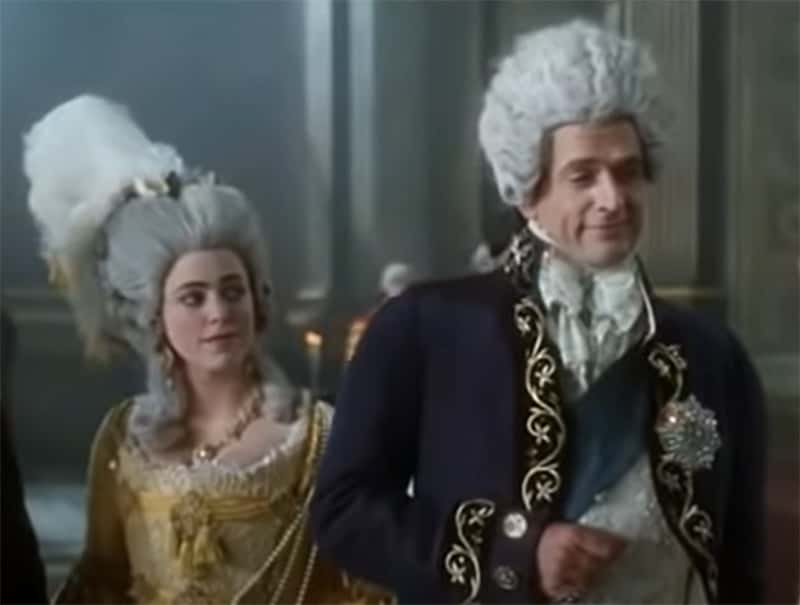 The Madness of King George (1994), The Samuel Goldwyn Company
The Madness of King George (1994), The Samuel Goldwyn Company
50. She Took It To The Grave
Some scholars claim that Fitzherbert had one, or maybe even two, children with the King. A few Americans have even laid claim to the royal throne. The debate continues but here’s something that may make you wonder: When the King passed away, an executor asked her to sign a document stating that she and George never had children.
Maria Fitzherbert refused to sign it.
Sources: 1, 2, 3, 4, 5, 6, 7, 8,

